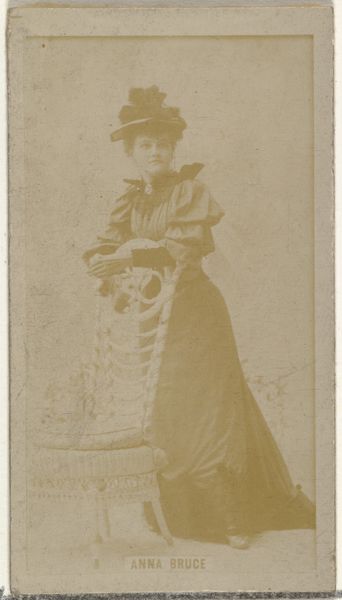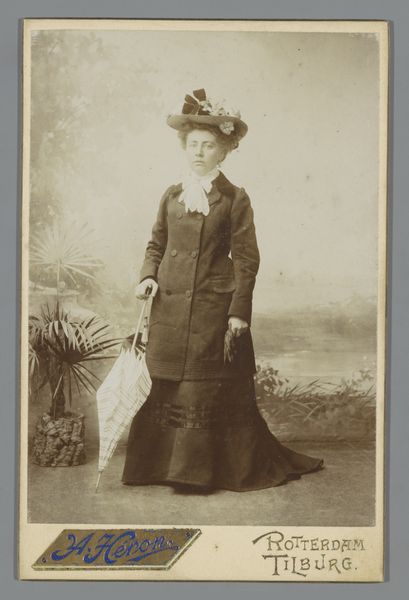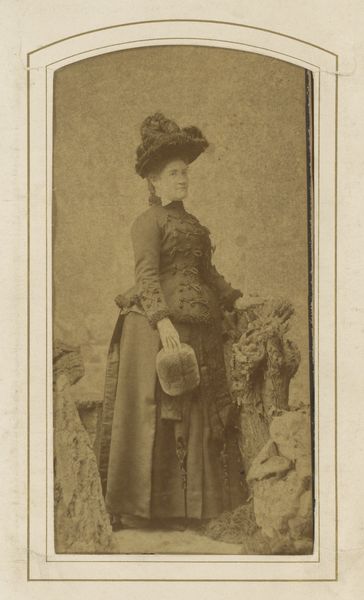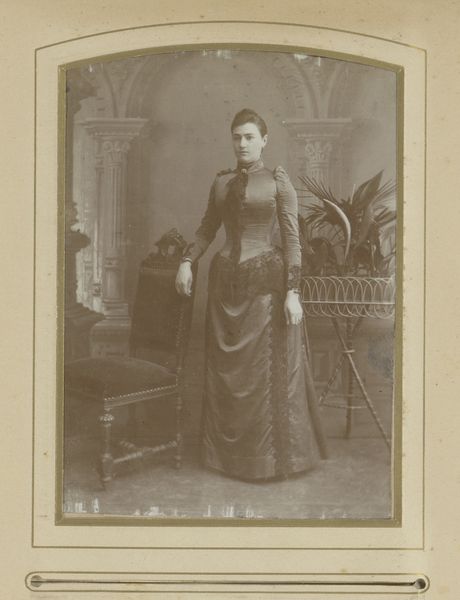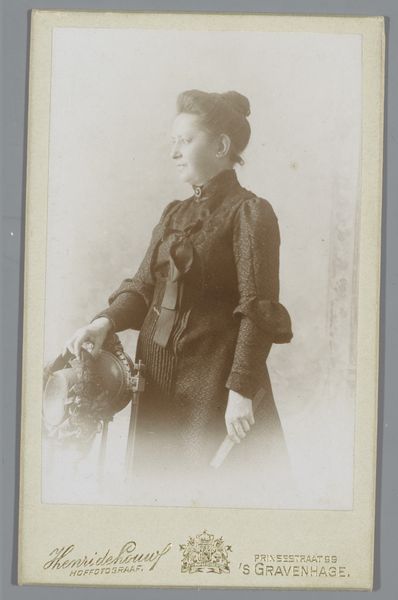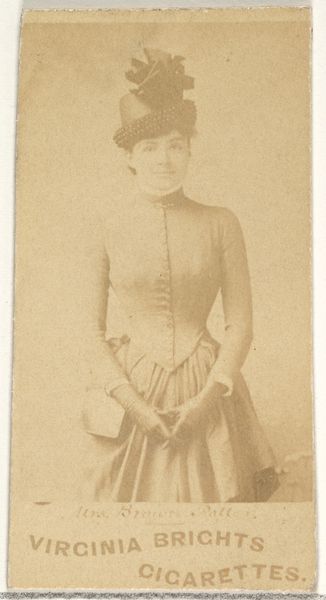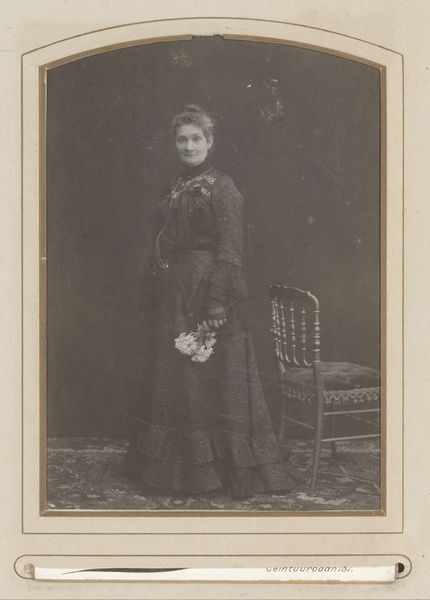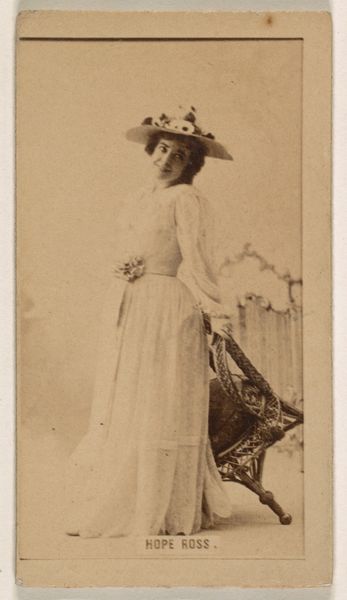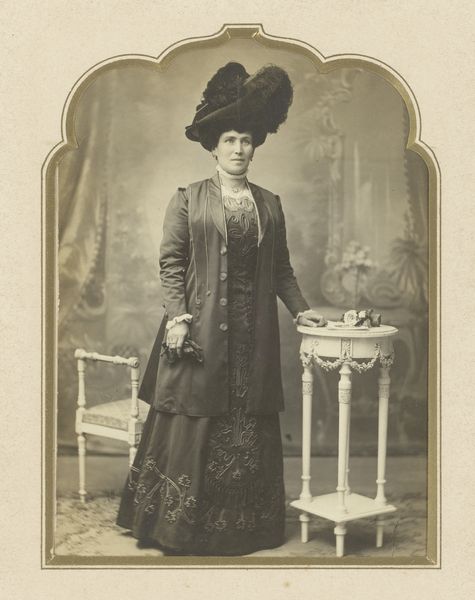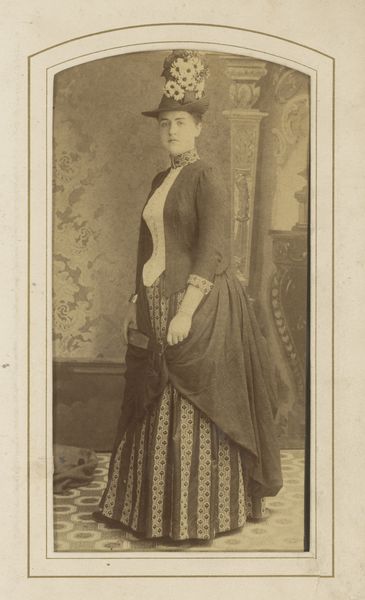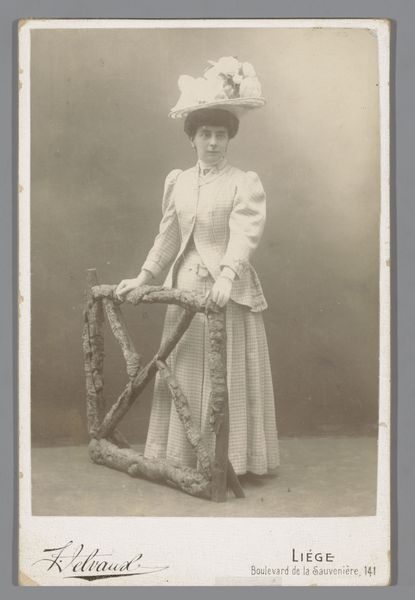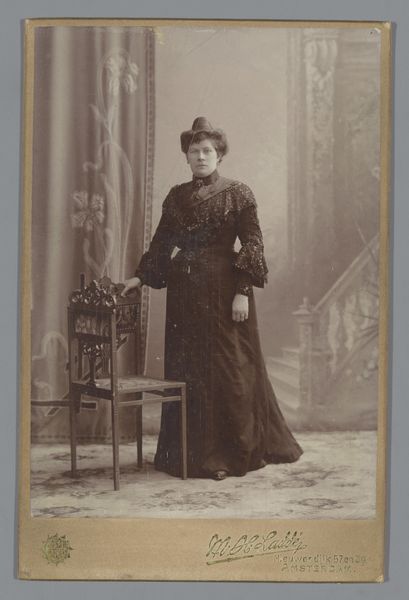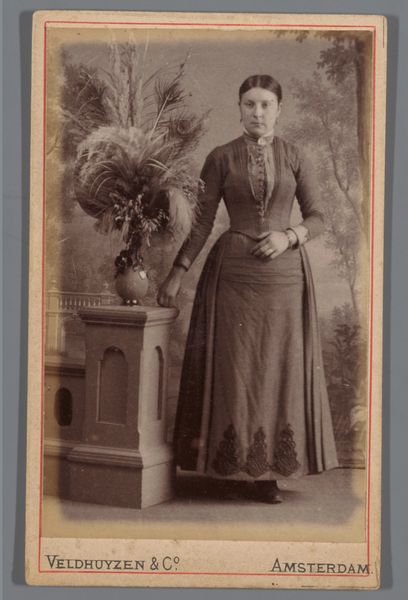
photography
#
portrait
#
photography
#
historical fashion
#
genre-painting
Dimensions: height 164 mm, width 105 mm
Copyright: Rijks Museum: Open Domain
Editor: This photograph, "Portret van een onbekende vrouw met een paraplu," from between 1860 and 1905, by Jan Goedeljee, presents a rather formal figure. It's sepia tone gives it a kind of gravity, but I can't help feeling there is something performative here too. What do you see in this image? Curator: Well, the very objects around her are rich in symbolic language. Consider the umbrella itself – ostensibly a shield from the elements, it’s transformed into a social signifier. Who possesses protection? Who has access to such finery? Notice, it's closed. It's a gesture, not a tool in use. Editor: That's a good point. The setting seems constructed, staged in some way. Curator: Precisely! Note how this alludes to the 'genre painting' that you mentioned. Consider how genre paintings work; there's an unwritten code that speaks to a shared cultural understanding, a collective memory of how we perform and how we dress up. In this photograph we see an elaborate scene with the rail, the table with flowers; these convey certain messages and project identity, even status, in a similar vein. Editor: The outfit especially feels like a performance of status. It tells us a lot about her position, even though she’s ‘unknown’ to us now. Curator: Right, fashion has long served as powerful communicator, subtly declaring wealth, affiliation, and conformity and differentiating people in groups and communities. The attire mirrors broader societal conventions about gender and expectations in that era, it all informs identity in subtle, but profound ways. Editor: I hadn't thought about how the seemingly incidental items in a photograph contribute to the story being told. Thank you for illuminating the layers of meaning. Curator: And thank you, I hadn't really considered it this way either before your questions, either!
Comments
No comments
Be the first to comment and join the conversation on the ultimate creative platform.
